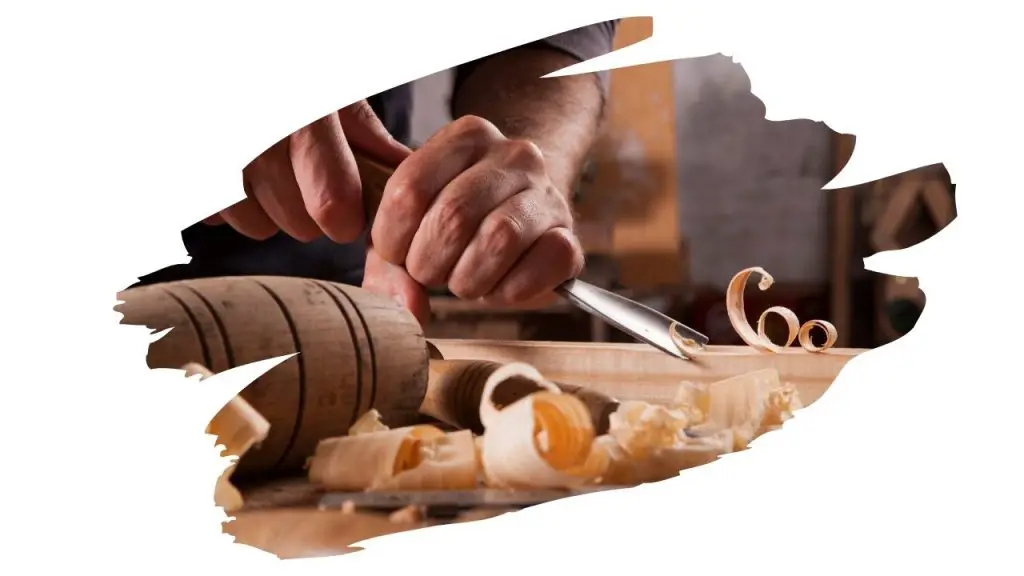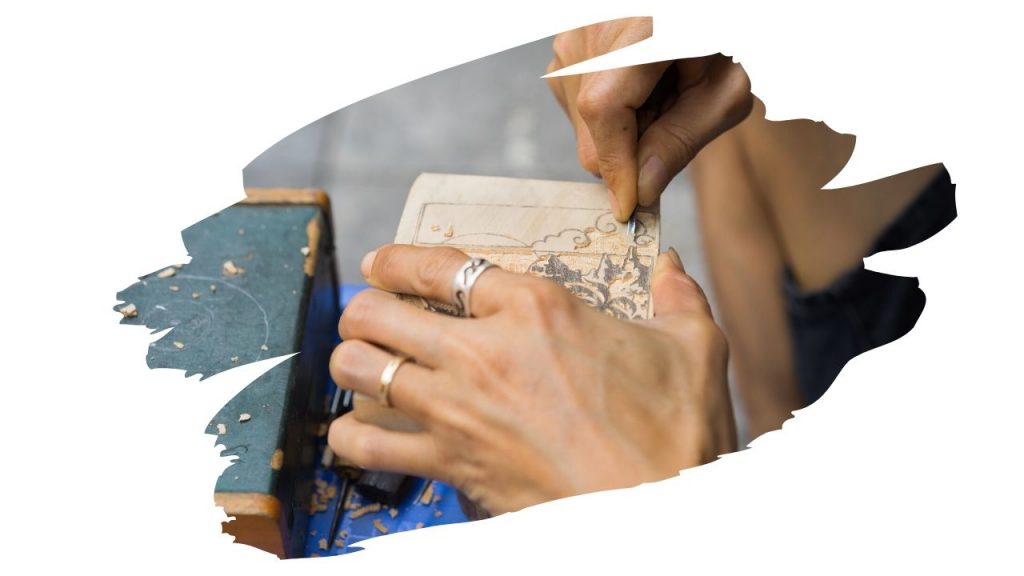Aspen is a keystone species, which means that it is an integral connecting point in the ecological web of life. Many animal species in the wild rely on aspen for food and shelter.
But, if you’re new to woodworking, you may be wondering “can I use aspen wood for carving?” Well, Aspen is one of the best woods for woodworking and has been used in many different products, from matchsticks to furniture to artistic carvings. It remains a favorite among woodcarvers.

This post may contain affiliate links to products that we receive a commission for (at no additional cost to you). Learn more here.
What Is Aspen Wood?
There are several varieties of aspen found throughout the world, but perhaps the most well known is the quaking aspen (Populus tremuloides) which grows prolifically throughout North America, particularly in the Great Lakes Basin.
The tree takes its name from the trembling or quaking appearance of its leaves. This is due to its flattened and flexible petioles, the part of the plant that allows the leaves to turn towards the sun to maximize photosynthesis.
The result is that aspen’s leaves visibly and often audibly tremble or quake in the slightest breeze.
Aspens are medium-sized deciduous trees that typically grow no taller than 80 feet and remain fairly thin with a trunk diameter of around a foot-and-a-half. The individual tree will live and grow for typically around 150 years before reaching the end of its natural lifespan.
Aspen is interesting in that the individual trees that we see are actually part of a singular organism. Below the ground, there is just one, massive root system.
This is why you find “stands” of aspens, or individual trees clustered together in one area. Each tree is an exact clone of its neighbors.
The oldest and largest clonal aspen is known as “Pando” and is located in southern Utah in Fishlake National Forest. It stretches almost 100 acres and is estimated to be 80,000 years old.
Although aspen can reproduce through seeds, it more commonly disseminates itself through root sprouts. Stands of aspen can become prolifically large this way, although most are smaller and younger than Pando.
Related Post: Why Staining Aspen Wood Can Be Tricky (+ What You Should Do Instead)
Is Aspen A Hardwood Or Softwood? (And What Is It Used For)?
To quickly answer that question, Aspen is classed as a hardwood, making it great for carving. But, in addition to being an excellent material for wood carving, aspen also has many other uses in nature and has been used widely in various industries.
Aspen is a food source for grouse, quail, beavers, and rabbits; the foliage also feeds grazing livestock such as sheep and goats. Various species of moths and butterflies make use of the leaves for food when they are in their caterpillar stages.
After colonization began, invading European nations began to use aspen in several capitalist industries; it was particularly popular in Canada for the production of paper and was used in pulp mills to manufacture books and newspapers throughout much of the 20th century.
Although aspen does not dry well and rots easily, therefore making it an inferior choice for fuel-wood, it is still sometimes used as firewood in campgrounds due to its wide availability.
Early colonizers would also sometimes use aspen wood in their buildings, although it is not ideal for outdoor structures that are intended to last for a long time.
Now aspen is commonly found in all sorts of products, including matches, toothpicks, boxes, crates, and wall paneling. It is a lightweight wood and therefore particularly useful for these lightweight tasks.
Woodworkers of all stripes, including carvers who seek to create smooth and flowing lines, also love aspen for its versatility.
Aspen is white to light brown, with little variation in color between the sapwood (which comprises the majority of the wood in the tree) and the heartwood.
The heartwood is sometimes marked with darker streaks of brown. When aspen has been exposed to the elements for a while, it begins to take on a Grey appearance.
Is Aspen Good For Woodworking?
Woodcarving is an art and, as with any other art, it is important to pay attention to the unique qualities of the medium that you choose to use.
Many professional and amateur woodcarvers prefer aspen over any other wood because it is one of the easiest woods to work with.
Aspen is relatively soft with a very fine, straight grain that offers little resistance and interference to the carver’s tools.
Aspen is also a non-resinous wood, which makes for easier carving. Unlike something such as pine, which is knotty and sticky with resin, aspen wood is an ideal wood for carving. It resists splitting or cracking when penetrated with a nail, and is thus useful for light building tasks and the creation of certain pieces of furniture.
Aspen wood is known for being 100% splinter-free, which makes it an excellent and safe choice for the production of handmade children’s toys.
However, its wood fibers do tend to fray and ‘fuzz’ and so you should take extra time and care if you want to get a smooth surface from this type of wood.
Fortunately, aspen wood also takes well to being painted and can be easily finished off in a decorative, artistic style. A high-quality paint job will last several years, making aspen a popular choice for interior finishes in homes.
You should also be aware that aspen wood can develop a disagreeable odor and begins to decay quickly when wet or otherwise left to the elements of nature.
However, when kept dry and sheltered, aspen wood has no odor and can be used safely in bowls or other vessels for holding and storing food items.

What Other Woods Can I Use for Carving?
The other wood that is commonly used by beginner carvers is basswood.
This wood is very similar to aspen in its structure, although it is an even softer wood and thus often the first choice for beginner woodcarvers even before aspen.
Basswood is fairly inexpensive and easily acquired and is used to make quality but affordable musical instruments from guitars to woodwinds.
Another wood that is good for carving is butternut. Butternut is a fairly soft wood, a darker brown than aspen or basswood but lighter in shade than walnut wood.
One thing for carvers to watch out for when working with butternut is the frequent wormholes, which add character to the wood but also can make carving a challenge.
Black walnut is more difficult to carve than butternut, but it has a deeper, richer color and polishes up particularly well. It is a hard but beautiful wood that makes it an ideal choice for crafting furniture.
Want to learn more about Black Walnut wood (and discover why this high-priced timber is so prized among woodworkers)? Simply click here to learn more: Why Is Walnut Wood So Expensive? (What You Need To Know)
Oak is synonymous with strength, and so it is unsurprisingly a popular choice for building projects that need to withstand a lot of wear and tear.
However, Oak is a very hard wood. Which means that carvers, particularly those who are just beginning their craft, might find it difficult to work with.
Final Thoughts
It’s no surprise that aspen wood is a popular choice for woodcarvers, and often the first choice for amateurs and professionals alike.
It’s fine straight grain and soft nature makes it easier to carve than many other kinds of wood and the frequency with which it is found in North America makes it a sustainable choice.



